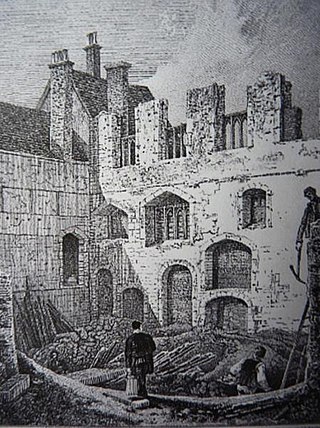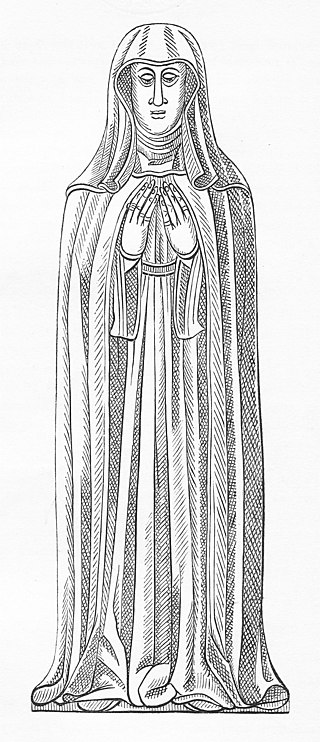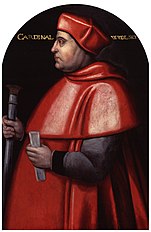
Anne Boleyn was Queen of England from 1533 to 1536, as the second wife of King Henry VIII. The circumstances of her marriage and of her execution by beheading for treason and other charges made her a key figure in the political and religious upheaval that marked the start of the English Reformation.

Anne of the Thousand Days is a 1969 British period historical drama film based on the life of Anne Boleyn, directed by Charles Jarrott and produced by Hal B. Wallis. The screenplay by Bridget Boland and John Hale is an adaptation of the 1948 play of the same name by Maxwell Anderson.

George Boleyn, Viscount Rochford was an English courtier and nobleman who played a prominent role in the politics of the early 1530s as the brother of Anne Boleyn, second wife of King Henry VIII. George was the maternal uncle of Queen Elizabeth I, although he died long before his niece ascended the throne. Following his father's promotion in the peerage in 1529 to Earl of Wiltshire and Earl of Ormond, he adopted his father's junior title Viscount Rochford as a courtesy title. He was accused of incest with his sister Anne during the period of her trial for high treason, as a result of which both were executed.

Henry Percy, 6th Earl of Northumberland, KG was an English nobleman, active as a military officer in the north. He is now primarily remembered as the betrothed of Anne Boleyn, whom he was forced to give up before she became involved with and later married King Henry VIII.

Wilton Abbey was a Benedictine convent in Wiltshire, England, three miles from Salisbury, probably on the site now occupied by Wilton House. It was active from the early tenth century until 1539.
Elizabeth Boleyn, Countess of Wiltshire was an English noblewoman, noted for being the mother of Anne Boleyn and as such the maternal grandmother of Elizabeth I of England. The eldest daughter of Thomas Howard, 2nd Duke of Norfolk and his first wife Elizabeth Tilney, she married Thomas Boleyn sometime in the later 15th century. Elizabeth became Viscountess Rochford in 1525 when her husband was elevated to the peerage, subsequently becoming Countess of Ormond in 1527 and Countess of Wiltshire in 1529.

The Other Boleyn Girl (2001) is a historical novel written by British author Philippa Gregory, loosely based on the life of 16th-century aristocrat Mary Boleyn of whom little is known. Inspired by Mary's life story, Gregory depicts the annulment of one of the most significant royal marriages in English history and conveys the urgency of the need for a male heir to the throne. Much of the history is highly distorted in her account.

William Carey was a courtier and favourite of King Henry VIII of England. He served the king as a Gentleman of the Privy chamber, and Esquire of the Body to the King. His wife, Mary Boleyn, is known to history as a mistress of King Henry VIII and the sister of Henry's second wife, Anne Boleyn.
MargaretSpencer (1472–1536) was the daughter of Sir Robert Spencer, of Spencer Combe in the parish of Crediton, Devon, by his wife Lady Eleanor Beaufort, the daughter of Edmund Beaufort, 2nd Duke of Somerset and Lady Eleanor Beauchamp.
Amesbury Abbey was a Benedictine abbey of women at Amesbury in Wiltshire, England, founded by Queen Ælfthryth in about the year 979 on what may have been the site of an earlier monastery. The abbey was dissolved in 1177 by Henry II, who founded in its place a house of the Order of Fontevraud, known as Amesbury Priory.
Amesbury Priory was a Benedictine monastery at Amesbury in Wiltshire, England, belonging to the Order of Fontevraud. It was founded in 1177 to replace the earlier Amesbury Abbey, a Saxon foundation established about the year 979. The Anglo-Norman Amesbury Priory was disbanded at the Dissolution of the monasteries and ceased to exist as a monastic house in 1539.
Sir Francis Bryan was an English courtier and diplomat during the reign of Henry VIII. He was Chief Gentleman of the Privy chamber and Lord Justice of Ireland. Unlike many of his contemporaries, Bryan always retained Henry's favour, achieving this by altering his opinions to conform to the king's. His rakish sexual life and his lack of principle at the time of his cousin Anne Boleyn's downfall led to his earning the nickname the Vicar of Hell.
Sir Edward Bayntun, of Bromham, Wiltshire, was a gentleman at the court of Henry VIII of England. He was vice-chamberlain to Anne Boleyn, the King's second wife, and was the brother-in-law of Queen Catherine Howard, Henry VIII's fifth wife.

Sir John Cary (or Carey) (c. 1491 – 1552), of Pleshey in Essex, was a courtier to King Henry VIII, whom he served as a Groom of the Privy Chamber, and of whom he was a third cousin, both being 4th in descent from John Beaufort, 1st Earl of Somerset (1371-1410).

Cecily Bodenham, was the last abbess of Wilton Abbey. Her tenure as abbess was from 1534 to 25 March 1539, when she surrendered the abbey to the commissioners of King Henry VIII of England during the Dissolution of the Monasteries. She received a generous pension and a property at Fovant, where she retired with about ten of the nuns from Wilton.

Lady Eleanor Beaufort was the daughter of Edmund Beaufort, 2nd Duke of Somerset (1406-1455), KG, and was a sister of the 3rd and 4th Dukes of Somerset.
Armathwaite Nunnery was a Benedictine nunnery in Cumbria, England. It was situated near the confluence of the rivers Croglin Water and Eden in the southern angle of the parish of Ainstable, and was first known as the nunnery of Ainstable.

The Abbey of the Minoresses of St. Clare without Aldgate known also variously as the "Abbey of the Blessed Virgin Mary, Aldgate" or the "House of Minoresses of the Order of St Clare of the Grace of the Blessed Virgin Mary" or the "Minoresses without Aldgate" or "St Clare outside Aldgate" or the "Minories, London" was a monastery of Franciscan women living an enclosed life, established in the late 13th century on a site often said to be of five acres, though it may have been as little as half that, at the spot in the parish of St. Botolph, outside the medieval walls of the City of London at Aldgate that later, by a corruption of the term minoresses, became known as The Minories, a placename found also in other English towns including Birmingham, Colchester, Newcastle upon Tyne and Stratford-upon-Avon.

Agnes Jordan was the last pre-reformation Abbess of Syon Monastery. It was she who had to sign the deed of surrender on 25 November 1539 which brought to an abrupt end the life of the abbey and granted all its property and wealth to Henry VIII. She was the sister of Isabel Jordan, prioress and later abbess of Wilton Abbey.
Isabel Jordayne was an English abbess of Wilton Abbey. She was the penultimate abbess whose election was debated by Cardinal Wolsey and Anne Boleyn before Henry VIII, the abbey's patron, chose her.














